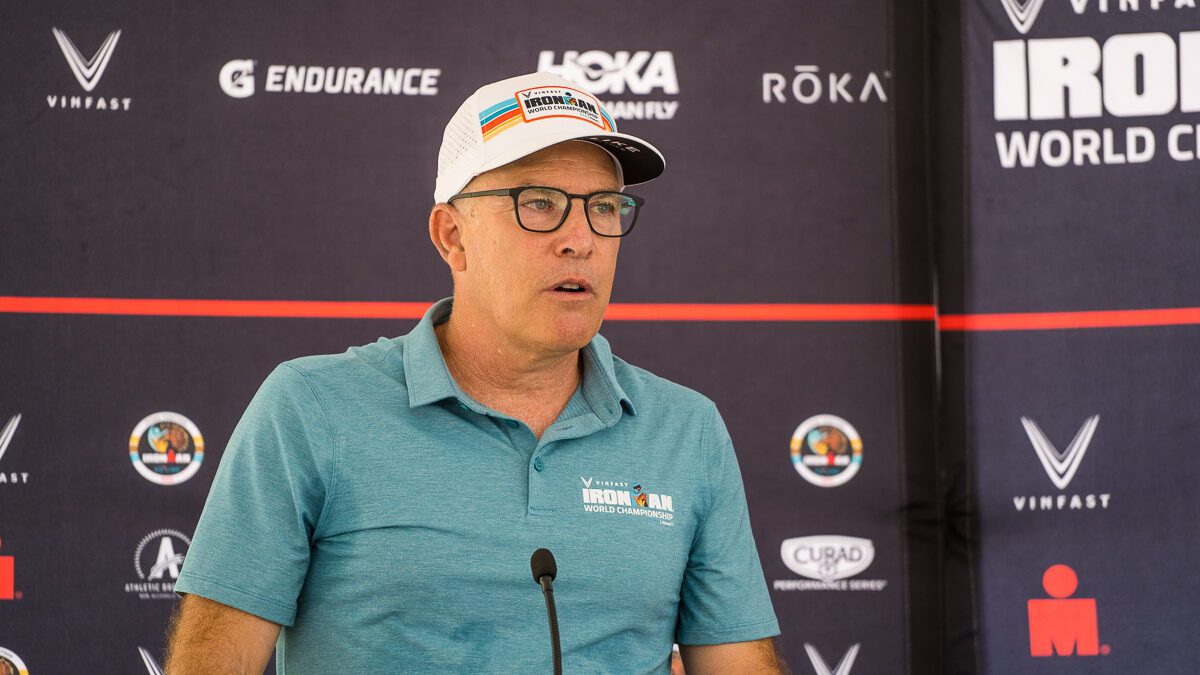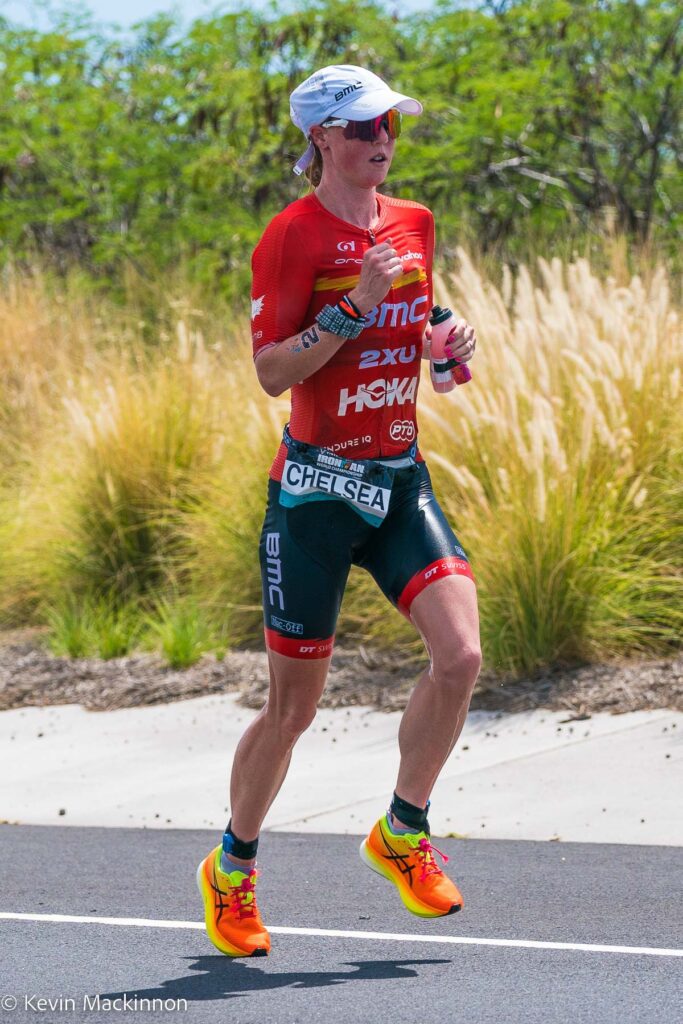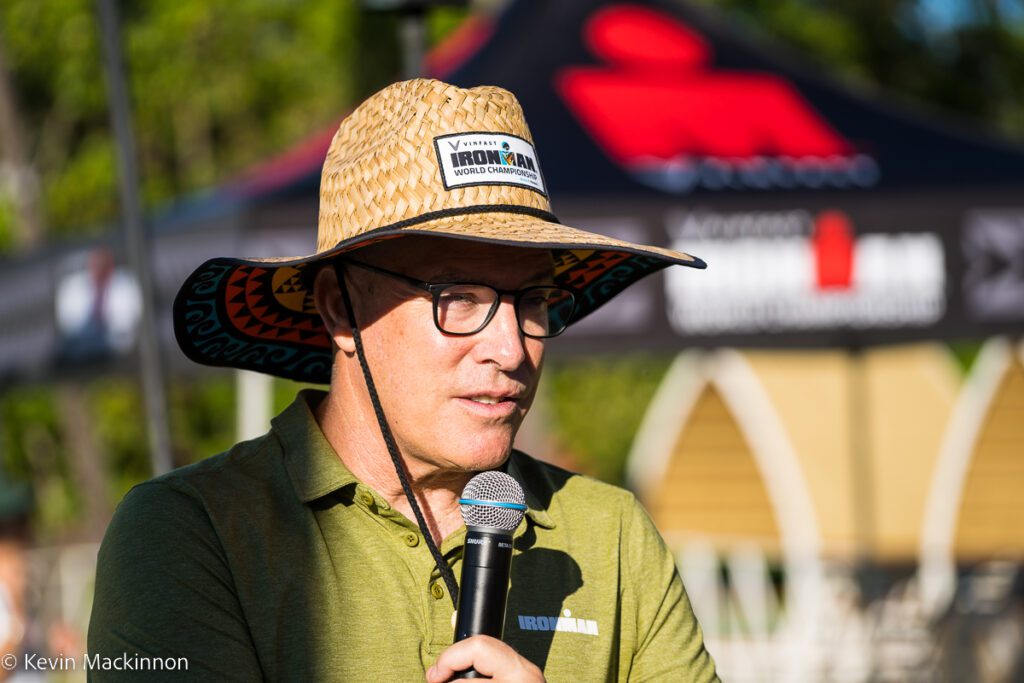Ironman CEO Andrew Messick on Kona decision: a choice of which promise to keep to athletes
Ironman CEO Andrew Messick explains the background behind the recent decision to split world championship venues
 Photo by:
Kevin Mackinnon
Photo by:
Kevin Mackinnon
Ironman CEO Andrew Messick has been with the company for 12 years. That’s more than a quarter of the time Ironman has existed. Before he took on the position at Ironman, Messick worked at the NBA and was also ran the Tour of California cycling race. Since he’s come on board, Ironman has made some dramatic changes, but yesterday’s announcement that the Ironman World Championship would be split between two venues starting in 2023 is probably the biggest in the history of Ironman racing.
We caught up with Messick to get some background on how, and why, that decision was made. Ultimately, as you’ll read below, the company was in a tough spot. But, for Messick, Thursday’s announcement is a necessary move if the company, and the sport, is to continue to grow.
“I love the fact that we’re old enough to have history, but not so old that we’re held hostage by it,” Messick said. “One thing that I have seen is that I’ve seen lots of things go the wrong way because people have been unwilling to change with the times. You can’t just hang on to what you’ve always done and expect to be successful over time. You have to adjust, you have to adapt, you have to be prepared to take some chances. If you don’t, you’re just going to become sclerotic, and then you’ll really lose. We’ve always been prepared to try different things, and by and large they’ve worked, but, as my old boss David Stern used to say, everyone who makes decisions has a batting average. No one ever gets every decision right. If you’re going to be in the decision-making business, and, as CEO of the company, I am, you have to try to make the best decision you make every time, you have to constantly try to improve your batting average. But you also have to recognize that you’re not always going to get a base hit. And you have to create an organization that is built the same way. I’m very proud of this company for its willingness to innovate. We are prepared to do new things, and we’re prepared to take chances. I understand that splitting the world championship is one of those things, but the alternative is to go backwards. Going back to one day in Kona? ‘It was great seeing you at the front of the race, Chelsea, it’s not going to ever happen again?’ No way, we’re not doing it.”

“We wish that we could keep both of the promises we made in 2023,” Messick said. “The first being that men and women get their own day of racing, and the second promise being that everyone races in Kona. The truth — however much we don’t like it — is that we can’t keep both promises. We wish it was different. We wish that we had the ability to race twice in Kona. We tried to work with the community. Thursday/ Saturday wasn’t going to happen, and Saturday/ Saturday was going to happen, October and April wasn’t going to happen. It just became clear that the appetite of the community is limited to one day of racing a year. We’re guests there. Despite the fact that we have 40 years of history and we have a team that lives on the Big Island, the community spoke, and we have to respect their desires and their wishes and live with the implications.”
While Messick feels that Ironman has no choice but to make this move, he completely understands the frustration many athletes have expressed.
“I’m sensitive to the fact that we made an announcement yesterday in which we said you’re not going to Kona and we’re not ready, yet, to tell you where you are going to,” he said. “That’s hard for people. You’re taking something that’s concrete and definite and placing it with something that has uncertainty around it. We understand that. It’s a very human thing to find it disconcerting when all of a sudden you’ve always thought it was going to be Kona and now we’re saying its somewhere else and we’re not telling you where the somewhere else is.”
“Part of what makes Ironman unique is that we’ve never been afraid to take hard decisions that we thought would be in the best interests of our community. We’re not afraid to take chances, and we’re not afraid to try new things. We have a lot of belief in this.”

Messick, who competed at Ironman events as an age group competitor before he became part of Ironman, is all too aware of just how difficult qualifying for Kona has become. That drives a lot of desire to continue to have the world championship race be held over two days.
“We chose that the promise we’re going to keep is two days of racing,” he said. “We feel that’s right for the women, who deserve a spotlight of their very own. We feel that its right for age group athletes – for whom qualifying to the world championship has become extraordinarily more difficult and dramatically harder than it was 10 or 20 years ago. So, to do that, the only way we could do it was to go back to one day in Kona and find another destination to be able to host the other gender.”
Maintaining the relationship with the Big Island, though, remains an important priority.
“Kona is so inexorably linked to the Ironman World Championship. 40 years of history,” Messick said. “We hope it stays that way forever. But, at the same time there is a very practical reality. That practical reality is, that back when I was doing Ironman Canada as an age grouper in 2005, there were more than 100 Kona slots at Ironman Canada. And it was a smaller race. Today, with one of racing, we have races all around the world that only have 40 slots. It’s so much harder to qualify for the world championship today than it was 10 years ago or 20 years ago. We think, for age group athletes male and female, of all ages, the dream of qualifying for the world championship is something we want people to feel is attainable, is within their grasp. It’s a real possibility. Increasingly, in a one day scenario, it just doesn’t work.”
So, despite the long-term relationship, and the benefits the community gets from the influx of athletes, friends, family and others who come to the Big Island for the world championship, it became obvious that the community in Kailua-Kona simply isn’t ready for the disruption two days of racing caused.
“We’ve learned a lot in the last six weeks,” Messick continued. “One of the things we learned is that, yes, in a two-day scenario we have twice as many athletes. But, we’ve also learned that when there’s 2,500 athletes racing all the hotels are full. When there’s 5,000 athletes racing, all the hotels are full.”
“The people who work in Kailua Kona … they don’t necessarily participate in the upside of that second day. When we talk to restaurants in Kona, what they tell us is that when we have one day’s worth of athletes and their families, we serve as many meals as we can possibly serve. Our kitchen isn’t bigger now. We don’t have the ability to make more meals. When you get double the number of athletes, we don’t get twice the number of sales. Yes there’s more economic activity by having 5,000 athletes, but there aren’t necessarily that many more people who benefit from it.
“When you close West Hawaii on a Thursday, there are plenty of people who are inconvenienced by it. That relationship between the number of people who benefit and the amount they benefit, compared to the number of people who are inconvenienced and the amount they’re inconvenienced needs to be in balance. What we were told is that this year it wasn’t.”
Women’s only day … there’s no going back
Citing the success of other women’s sports including the European Football Championships and the Tour de France Feminine, Messick feels a dedicated day of women’s racing is a necessity for the Ironman World Championship.
“We feel like providing a dedicated spotlight for women’s age group and professional athletes is just the right thing to do,” he said. “Those were the promises that we felt most responsible to keep. Now we get to see what a world championship in a different place, potentially on a different continent is going to look like. I think that has the potential to be tremendously exciting.”
Rotating venues?
“We will be there a minimum of two years because we want to give men and women the opportunity to cycle,” Messick said when asked about the possibility of a rotating alternate venue. “I don’t know is the short answer. I like the idea of a permanent or semi-permanent alternative, I also like the idea of being able to bring the world championship to different regions and different countries. That’s worked really well with us for 70.3 worlds. Our experience with 70.3 worlds has been quite influential in our thinking. Both in having separate days for men and women, which we believe has been an absolute hit out of the park success, and gave us a lot of confidence that giving the sole spotlight to women at Kona will work because we’ve seen how well it worked in Kona in 2022, but over the years in the split format with the 70.3 world championship. Also the notion of rotating the 70.3 worlds to different regions and venues provides people who qualify often with variety and newness, and provides athletes with different types of courses and weather. So different types of athletes have the ability to be competitive. It just opens a whole bunch of doors.”
Messick also sees the new change as an opportunity for some pros for whom Kona was always a challenge.
“I’m bummed that Marino Vanhoenacker retired – he may be the greatest ever triathlete never to win Kona,” Messick said. “For extraordinarily gifted athletes who really struggled with the heat, the ability to race a world championship and become a world champion, potentially, somewhere else, I think is really exciting.”
